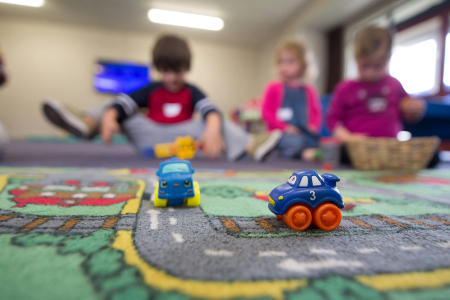We ask you, humbly: don't scroll away.
Hi readers, it seems you use Catholic Online a lot; that's great! It's a little awkward to ask, but we need your help. If you have already donated, we sincerely thank you. We're not salespeople, but we depend on donations averaging $14.76 and fewer than 1% of readers give. If you donate just $5.00, the price of your coffee, Catholic Online School could keep thriving. Thank you.Help Now >
NASA to send man to Mars
FREE Catholic Classes
Traveling to Mars sounds like part of the plot to a science fiction film, but NASA released their goal of bringing a man to the red planet as early as the 2030s.
We ask you, humbly: don't scroll away.
Hi readers, it seems you use Catholic Online a lot; that's great! It's a little awkward to ask, but we need your help. If you have already donated, we sincerely thank you. We're not salespeople, but we depend on donations averaging $14.76 and fewer than 1% of readers give. If you donate just $5.00, the price of your coffee, Catholic Online School could keep thriving. Thank you.Help Now >
Highlights
CALIFORNIA NETWORK (https://www.youtube.com/c/californianetwork)
10/12/2015 (8 years ago)
Published in Green
Keywords: NASA, Mars, planet, outer space, space agency, international space station
LOS ANGELES, CA (Catholic Online) - The space agency has outlined and summarized a three-phase plan in a report entitled Journey to Mars: Pioneering Next Steps in Space Exploration. It states that the journey will cross three thresholds, each with an increasing challenge as people move farther from Earth.
He said, "Today we are publishing additional details about our journey to Mars plan and how we are aligning all of our work in support of this goal. In the coming weeks, I look forward to continuing to discuss the details of our plan with members of Congress, as well as our commercial and our international partners, many of whom will be attending the International Astronautical Congress next week."
Associate administrator for Human Exploration and Operations at NASA Headquarters, William Gerstenmaier, says NASA's strategy will connect near-term activities and capability development to the journey to Mars, and a future with a sustainable human presence in deep space.
The first step in getting astronauts to Mars is already in progress, with astronauts and Russian cosmonauts living aboard the International Space Station (ISS) for a year to gather information on how their minds and bodies cope.
Different technology which could prove useful for replacing broken research kits on Mars are being tested on the ISS, such as 3D printers. They call this phase "Earth Reliant" exploration. With the collected data, NASA hopes scientists can plan a safe, manned mission to Mars, which would require a minimum of 245 days' travel.
Phase 2 of the mission is called "Proving Ground," where astronauts on Mars will have to be far more independent while the ISS orbits 250 miles from the surface of Earth and is visited often by cargo ships.
According to NASA's report, the space agency will advance and validate capabilities required for humans to live and work at distances much farther away from Earth. The report further stated, "Our goal is not bound by a single destination. We seek the capacity for people to work, learn, operate, and sustainably live safely beyond Earth for extended periods of time."
The report suggested that in the near future, space exploration campaigns could span decades and crewed missions could last up to a "thousand-and-a-hundred days." Within a decade, NASA will be launching a series of deep space missions, including the Asteroid Redirect Mission (ARM) that tests the technology necessary for carrying massive loads to Mars.
A powerful space transportation system is the answer to a successful journey, but NASA also needs to learn new ways of operating in space while reducing its reliance on Earth.
Putting astronauts on Mars is the third phase of the plan and will be fueled by the knowledge gained by human missions to the space station and the robotic Martian explorers, such as the Curiosity and Opportunity rovers.
According to NASA's report, robotic missions will address key exploration questions. The report also noted the challenges are all solvable. NASA and its partners are working on solutions every day to answer some of humanity's fundamental questions.
---
The California Network is the Next Wave in delivery of information and entertainment on pop culture, social trends, lifestyle, entertainment, news, politics and economics. We are hyper-focused on one audience, YOU, the connected generation. JOIN US AS WE REDEFINE AND REVOLUTIONIZE THE EVER-CHANGING MEDIA LANDSCAPE.








 Daily Readings for Friday, April 26, 2024
Daily Readings for Friday, April 26, 2024 St. Cletus: Saint of the Day for Friday, April 26, 2024
St. Cletus: Saint of the Day for Friday, April 26, 2024 Prayer before the Closing of the Day: Prayer of the Day for Friday, April 26, 2024
Prayer before the Closing of the Day: Prayer of the Day for Friday, April 26, 2024


